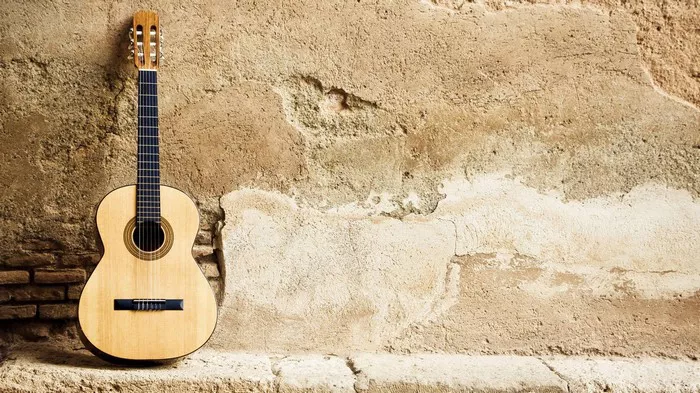Guitars, beyond their role as musical instruments, often transcend into objects of desire, investment, and historical significance. From the stages of Woodstock to intimate studio sessions, guitars wield immense cultural and monetary value. This article delves into the realm of the most expensive guitars, exploring their historical context, craftsmanship, and record-breaking auction prices.
Guitars hold a unique allure in the world of music and collectibles. They are not just instruments but artifacts that embody the creativity and passion of their owners and makers. The value of guitars extends beyond their utility, encompassing craftsmanship, historical significance, and the stories they carry from one generation to the next. In this exploration of the most expensive guitars in the world, we uncover what makes these instruments so coveted among collectors and music enthusiasts alike.
Historical Significance
Throughout history, guitars have been wielded by legendary musicians whose names echo through time. Iconic guitars played by the likes of Jimi Hendrix, Eric Clapton, and Jerry Garcia have become synonymous with the evolution of music genres and the cultural movements they inspired.
Jimi Hendrix’s Monterey Fender Stratocaster: Famous for its incendiary performance at the Monterey Pop Festival in 1967, this guitar marked a pivotal moment in rock history.
Eric Clapton’s “Blackie”: Crafted from parts of different guitars, “Blackie” became Clapton’s go-to instrument, showcasing his virtuosity across decades of performances.
Jerry Garcia’s Custom Doug Irwin “Tiger”: Adorned with a distinctive tiger head design, this custom guitar embodies Garcia’s eclectic style and fetched nearly a million dollars at auction.
Most Expensive Guitars in the World
1. Jerry Garcia’s Custom Doug Irwin “Tiger”
One of the most recognizable guitars in rock history, Jerry Garcia’s “Tiger” was custom-built by luthier Doug Irwin. This unique instrument features a striking tiger head inlay and was Garcia’s main guitar during his tenure with the Grateful Dead. In 2002, “Tiger” was sold at auction for an impressive $957,500, solidifying its status as an icon in both musical and collectible circles.
2. Eric Clapton’s “Blackie”
Eric Clapton’s “Blackie” is a legendary guitar fashioned from the parts of three separate Stratocasters. As Clapton’s favored instrument throughout the 1970s and 1980s, “Blackie” accompanied him on numerous tours and recordings, including the famous “Unplugged” session. In 2004, “Blackie” was sold at auction for $959,000, setting a new benchmark for guitar values and cementing its place in rock history.
3. Bob Dylan’s “Newport Folk Festival” 1964 Fender Stratocaster
Bob Dylan’s transition to electric guitar at the 1965 Newport Folk Festival marked a pivotal moment in music history. The 1964 Fender Stratocaster he played during this controversial performance was later auctioned for $965,000. This guitar not only symbolizes Dylan’s artistic evolution but also represents a watershed moment in the fusion of folk and rock music genres.
SEE ALSO: What Does Dreadnought Mean in Guitars?
4. Keith Richards 1959 Les Paul
Keith Richards’ 1959 Gibson Les Paul is another standout in the realm of valuable guitars. Known for its rich tone and vintage craftsmanship, this instrument is valued at over a million dollars, reflecting both its historical significance and the enduring legacy of Richards’ iconic guitar riffs with The Rolling Stones.
5. Other Expensive Guitars
Beyond these notable examples, several other guitars have commanded high prices at auction, driven by their association with famous musicians and exceptional craftsmanship.
David Gilmour’s “The Black Strat”: The Pink Floyd guitarist’s preferred instrument for recording classic albums like “The Dark Side of the Moon” and “Wish You Were Here.”
John Lennon’s 1962 Gibson J-160E: Acquired by Lennon in 1962 and used extensively during the Beatles’ early years, this guitar fetched a substantial sum at auction, underscoring its place in music history.
Craftsmanship and Rarity
The value of a guitar often hinges on its craftsmanship, materials used, and rarity. Factors such as the quality of wood, meticulous construction techniques, and the instrument’s provenance contribute significantly to its desirability among collectors.
Crafted by skilled artisans and often customized to suit the unique preferences of their owners, these guitars transcend their functional role to become works of art. Luthiers like Doug Irwin, who created Jerry Garcia’s “Tiger,” and the craftsmen at Fender and Gibson have elevated guitar-making to an art form, blending tradition with innovation to produce instruments of unparalleled beauty and sonic quality.
Auction Records
Notable auction sales have illuminated the stratospheric prices that guitars can command, reflecting their status as coveted collectibles and cultural artifacts.
Record-Breaking Prices: The highest auction price ever paid for a guitar stands as a testament to their enduring appeal. Auction houses like Christie’s and Sotheby’s have facilitated sales reaching into the millions, underscoring the global demand for rare and historically significant guitars.
Conclusion
In conclusion, the world of the most expensive guitars is a fascinating intersection of artistry, history, and cultural resonance. From the stage to the auction block, these instruments continue to captivate collectors and music enthusiasts alike. Whether through their association with legendary musicians or their exceptional craftsmanship, these guitars embody the spirit of creativity and passion that defines the world of music. As their values soar and their legacies endure, guitars remain timeless symbols of artistic expression and human ingenuity.


